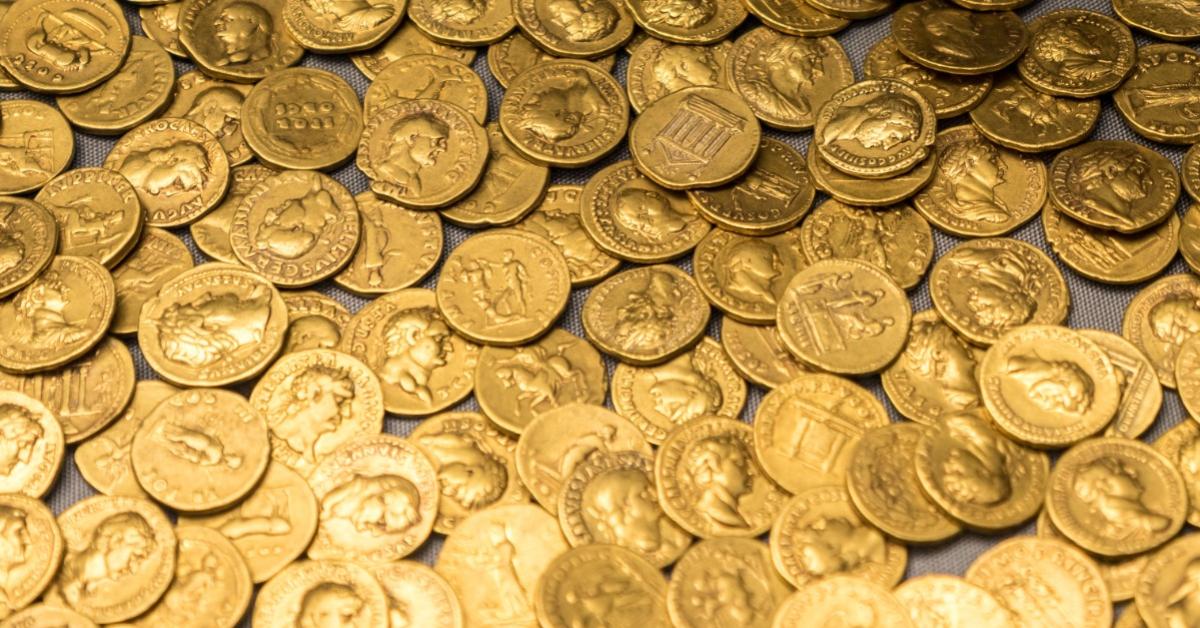
By the beginning of the fourth century, the Roman Empire had become a completely different economic reality from what it had been at the beginning of the first century. The denarius argenteus, the empire’s monetary unit during the first two centuries, had virtually disappeared since the middle of the third century, having been replaced by the argenteus antoninianus and the argenteus aurelianianus, numerals of greater theoretical value, but of less and less real value.
The public excesses in the civil and military budgets, the incessant bribes and gifts, the repeated tax increases, the growth of the state bureaucracy, and the continuous requisitions of goods and precious metals had exhausted the Roman economy to incredible levels. To cap this disastrous reality, inflation had risen from 0.7 percent per year in the first and second centuries to 35.0 percent per year in the late third and early fourth centuries, impoverishing all social strata of the empire by leaps and bounds.
In 301, Diocletian sought to put an end to this out-of-control situation by promulgating the Edictum de pretiis rerum venalium (Edict Concerning the Prices of Goods for Sale), which prohibited, on pain of death, the raising of prices above a certain level for almost thirteen hundred essential products and services. In the preamble to the edict, economic agents were blamed for inflation, labeled as speculators and thieves, and compared to the barbarians who threatened the empire.
Most producers and intermediaries, therefore, opted to stop trading the goods they produced, to sell them on the black market, or even to use barter for commercial transactions. This weakening of supply drove real prices even higher, in an upward spiral that further deteriorated the complex Roman economic system. Just four years later, in 305, Diocletian himself, overwhelmed by his political and economic failures, abdicated in Nicomedia and retired to his palace in what is today Split, Croatia.
A year after Diocletian’s abdication, a young Constantine, son of the tetrarch Constantius Chlorus, was proclaimed emperor by his troops at Eburacum, now York, England. Six years later, in 312, he took control of the West and then, in 324, also of the East, reunifying the empire once again under his rule. Considered the new Augustus, Constantine, like the first emperor, carried out an ambitious and far-reaching monetary system reform. In 310, he created a new solidus, lowering its weight to 4.5 grams and titling it 96–99 percent pure gold. This coin became the new centerpiece of the later Roman Empire’s monetary system, replacing the devalued silver numerals of the past.
The Constantinian solidus became the official unit for prices and accounts, and new taxes were levied exclusively in this currency. Thus, thanks to the confiscation of key gold reserves hoarded in pagan temples, which had become unprotected by the Roman state, the real value of this new currency, issued in large quantities, could be maintained, to the extent that it served as a haven in the Byzantine Empire until the eleventh century.
Alongside the solidus, Constantine also created two other gold numeraires in 324: the semis, weighing 2.25 grams and with a 96–99 percent title, and another coin weighing 1.7 grams at 96–99 percent pure gold. The system was completed both by three new supposedly “silver” coins—the heavy miliarensis (5.45 grams), the light miliarensis (4.50 grams), and the siliqua or argenteus (3.40 grams)—and by two more silver-plated bronze coins—the nummus (3.40 grams) and the centenionalis (between 2.70 and 1.70 grams).
However, these “silver” and bronze denominations were minted in enormous quantities and were continually devalued over the years, to the detriment of their most common users, the middle and lower social classes. The gold coins, however, used by the Roman state and the higher social classes, retained their original title and weight throughout. In this way, Constantine established gold monometallism for the first time in Roman history.
The death of Constantine in 337 and the subsequent division of the empire among his sons Constantine II, Constans, and Constantius II did not radically change the monetary system, but it did cause the “silver” and bronze numerals to be altered again: in 348, there appeared a new coin of 5.0 grams bronze and 2.5 percent silver, called pecunia maiorina by the Theodosian Code, as well as two others of 4.0 and 2.5 grams bronze and 1.0 and 0.1 percent silver, respectively. In 355, a new coin of 9.0 grams of bronze and 2.0 percent of silver appeared, called AE 1 by the specialists, while the siliqua was reduced in weight to 2.0 grams of “silver.”
The last great monetary reform of the empire was enacted by Valentinian I and Valens around 368. Gold was established as the stable axis of the later Roman Empire’s monetary system. Both the solidus and the semis reached a title of 99 percent pure gold. After the death of the two emperors, the system incorporated the tremis, at 1.5 grams of gold. This coin achieved great popularity and diffusion in the following decades.
This stabilization of the weight and grammage of gold numerals, the various reforms against corruption in the bureaucracy, a constant program of tax increases, and the withdrawal of excess liabilities still circulating in the empire all helped considerably to slow down inflation on an annual basis. However, this control of the gold numeraires did not apply to the rest of the “silver” and bronze systems. The siliqua, for example, was increasingly downgraded to 1.14 grams of “silver” and became an increasingly rare coin, while the newly created AE 1 lost virtually all of its precious metal content and the custom of silver-plating bronze coins was abandoned forever.
This monetary system remained largely unchanged until the fall of the Western Roman Empire in 476 and until the reforms of Anastasius in the East in 498. The gold monometallism of Constantine, on the other hand, survived until the last decades of the eighth century, when Charlemagne replaced it with an argent monometallism.
During the fourth and fifth centuries, the Roman economy finally deteriorated completely, taking with it society and, consequently, the ambitions of the politicians of the time. The Roman Empire was now a failed and outdated project. The persistent excess of public spending between the first and third centuries forced Roman rulers to devalue the currency continuously. This chronic devaluation, together with the decline in population and economic activity throughout the third century, triggered price inflation throughout the empire, a phenomenon that the Romans did not know how to handle.
Roman rulers attempted to use harmful price controls in order to mitigate the decline in the effective purchasing power of the middle and lower classes. For instance, the Edictum de pretiis rerum venalium of 301 ended up withdrawing what little supply of products remained on the white market, making them more expensive on the black market. It is truly shocking to note how many politicians and populist parties of all ideological stripes continue to propose these same “remedies” even today.
At the same time, the Roman emperors created a rigid system of taxes based on payments in kind to guarantee some annual income of the state. These public requisitions restricted the free supply of goods in the common market and thus impoverished artisans and merchants throughout the empire. To guarantee the tax revenue, Roman rulers prevented peasants and professionals from leaving their originally registered domiciles and activities, thereby creating hereditary castes of workers and preventing productive factors and capital from flowing to the sectors most in need of labor and capital investment.
To put an end to the galloping inflation, Constantine established a golden monometallism by controlling the weight, dimensions, and title of the different gold numerals. The tight control of the production of gold coins curbed the escalation of prices and eased the strains on the state’s accounts. Similarly, some countries today choose to combat the inflation of their currencies by dollarizing their economies, as in the recent case of the Bolivarian Republic of Venezuela.
However, the remaining silver and bronze numerals—the ones most used by the middle and lower classes—were left at the mercy of unyielding inflation, causing poverty and the continuous decapitalization of the poorest classes in the Roman Empire. As a result, numerous local currencies were minted, different from place to place and all of them of poor quality, while barter or exchange in kind was increasingly favored. This discouraged long-distance trade and large-scale industrial production, increasingly turning the different areas of the empire into local subsistence economies. City dwellers, overwhelmed by excessive tax burdens and lack of work, increasingly moved to the countryside, where the economy was organized in luxurious rustic villas, which gradually became castles.
Taken together, the aggregate effects of public overspending and inflation on the Roman economy in between the first and third centuries ultimately led to an unprecedented structural weakening of the economic capacity of fourth- and fifth-century society, reflected in the incompetence of its rulers and elites to hold the empire together in the face of external threats, which, to quote Ludwig von Mises himself, “were not more formidable than the armies which the legions had easily defeated in earlier times. But the Empire had changed. Its economic and social structure was already medieval.”







